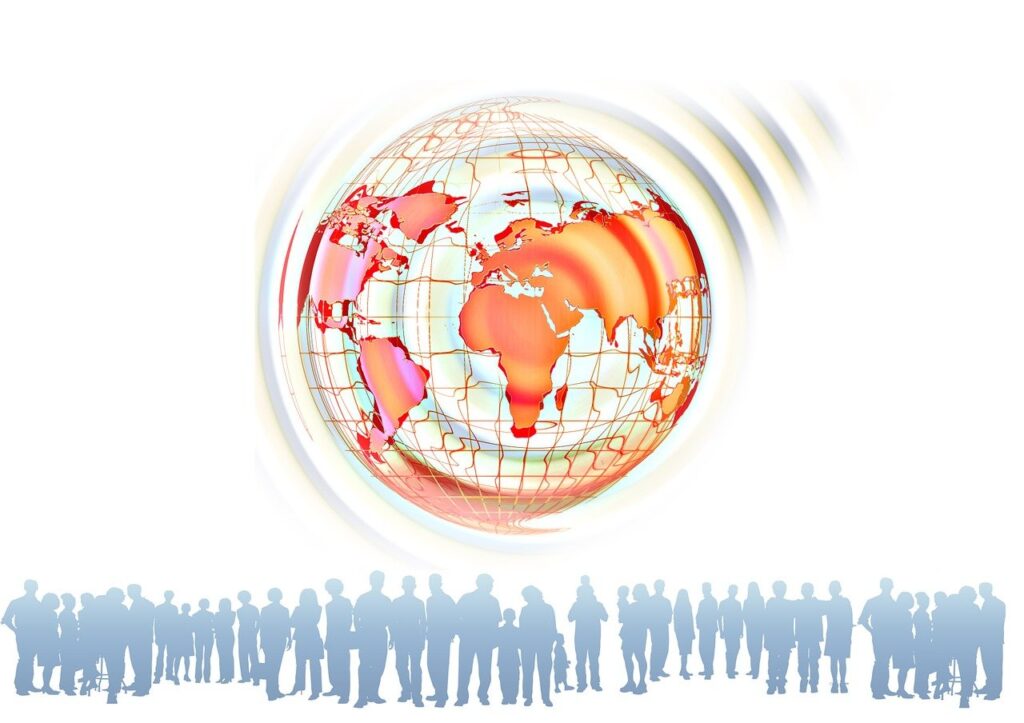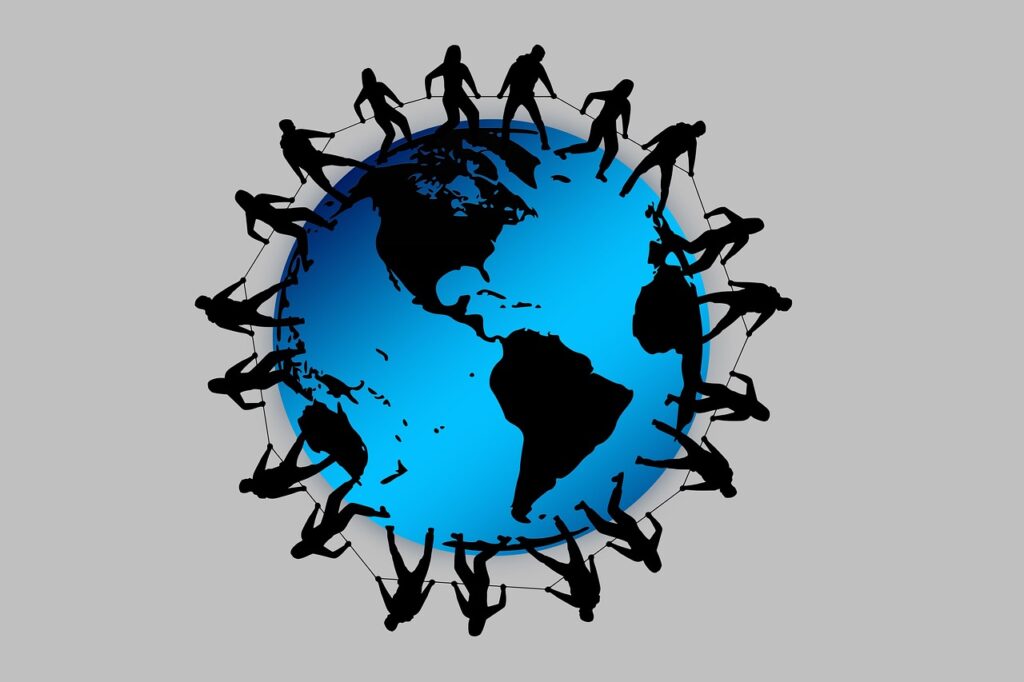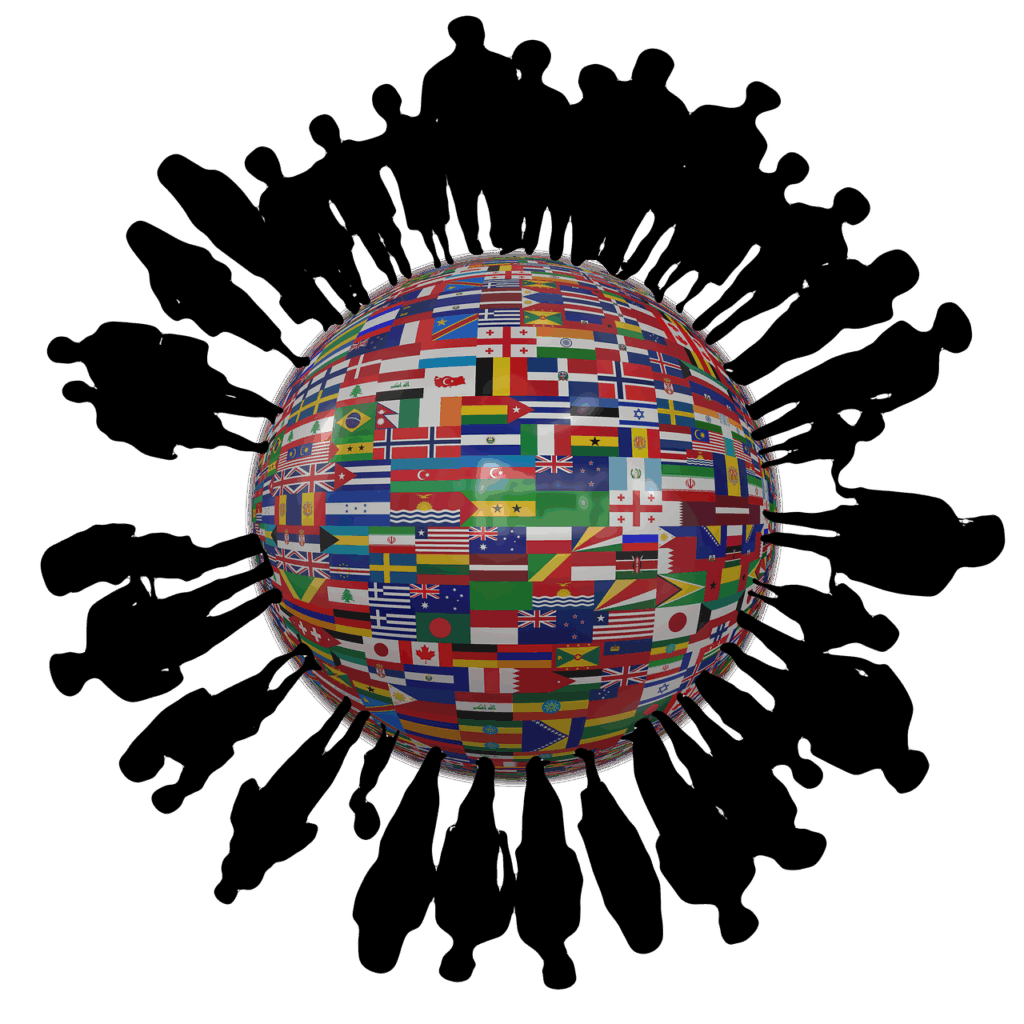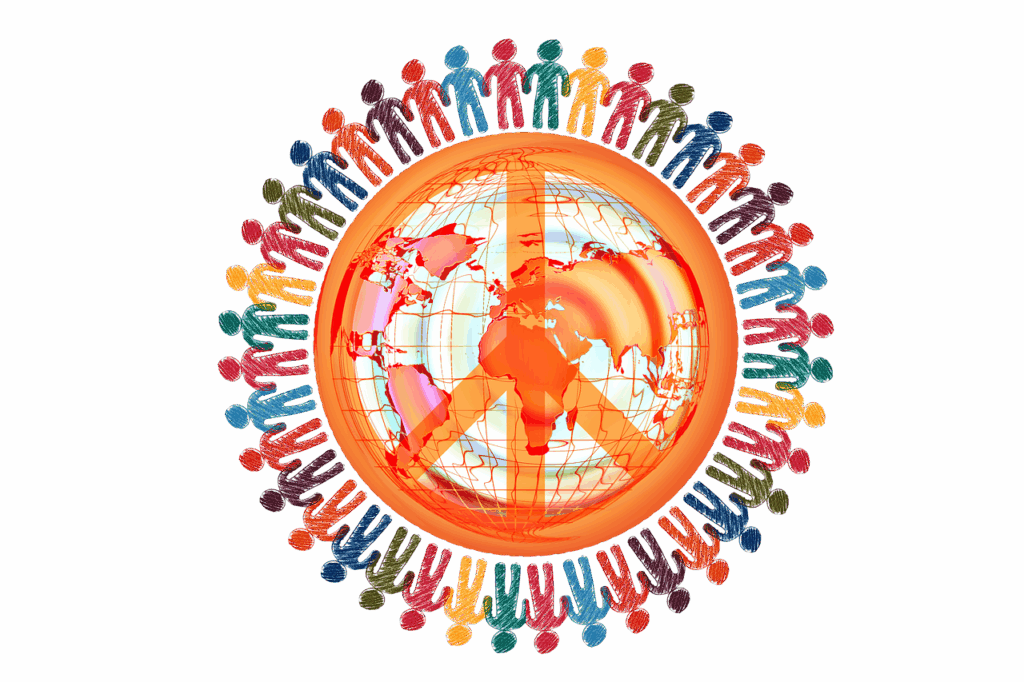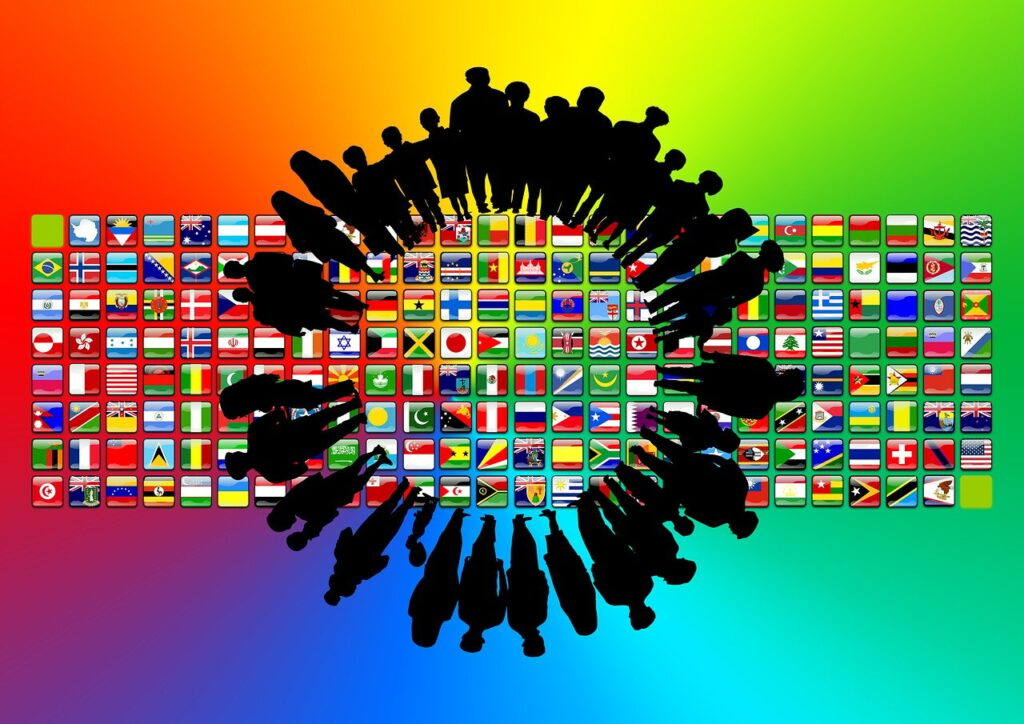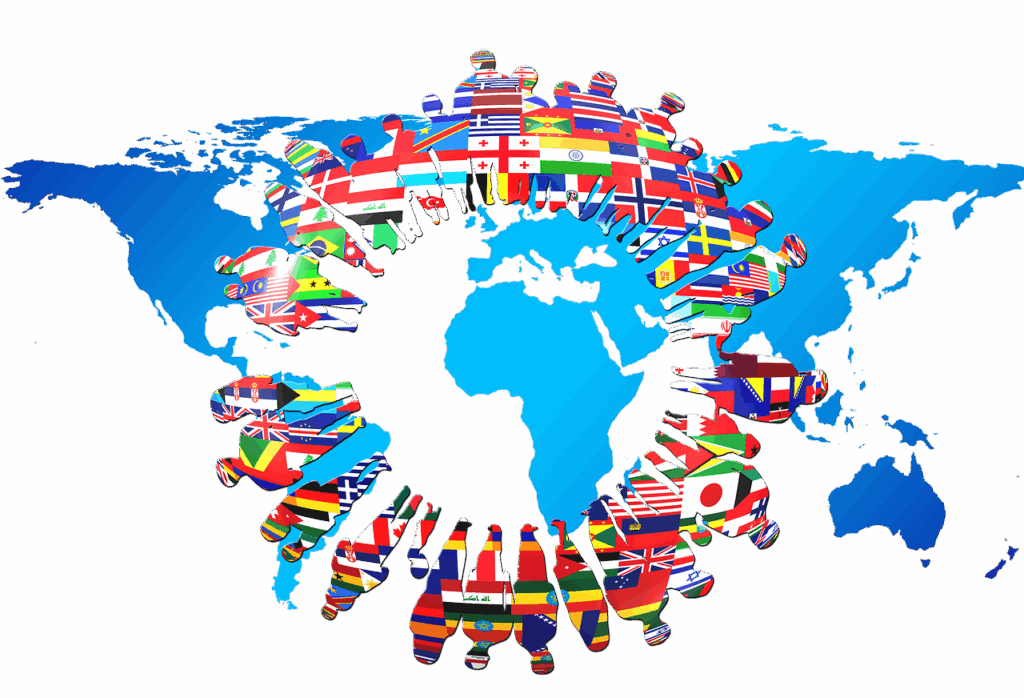
The sheer number of humans inhabiting our planet is a figure that continues to captivate and challenge our understanding of history, resources, and the future. As of mid-November 2022, the United Nations estimated that the world population proudly exceeded eight billion souls. This monumental achievement represents a journey spanning hundreds of millennia, a testament to humanity’s resilience, innovation, and interconnectedness.
It is truly remarkable to consider the timescale involved: it took an astonishing 300,000 years of human prehistory and history for the global population to first reach one billion. Yet, in what seems like a blink of an eye in comparison, a mere 218 additional years were sufficient for that figure to skyrocket to eight billion. Such rapid acceleration in recent centuries highlights profound shifts in human society and our relationship with the environment.
This in-depth analysis will meticulously trace the trajectory of global population, from its earliest estimates in prehistoric times through significant historical periods, right up to the intricate projections for the coming decades and beyond. We aim to provide an objective, evidence-based exploration, shedding light on the forces that have shaped and continue to influence the world’s most fundamental demographic trends, offering a comprehensive overview for the informed consumer of global data.
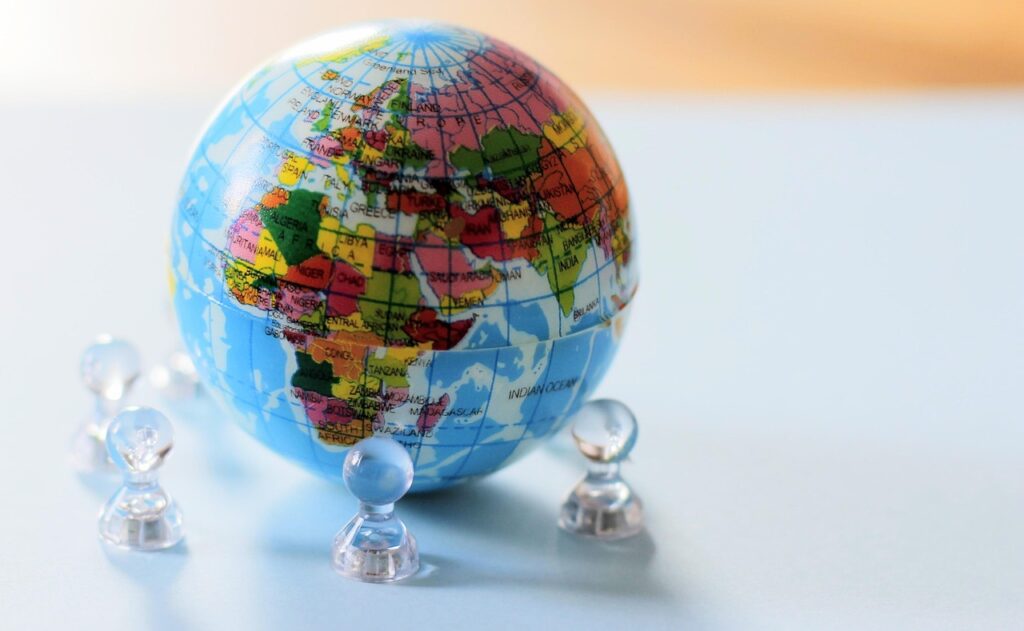
1. **The Current Global Population Snapshot**Our journey begins with a firm grounding in the present, understanding the recent benchmark of human numbers. The United Nations’ announcement that the world population surpassed eight billion in mid-November 2022 serves as a powerful reminder of ongoing demographic changes. This figure isn’t just a number; it encapsulates billions of individual lives, stories, and contributions across every corner of the globe, signifying a collective human presence unlike any other point in history.
While the total number of people continues to rise, it is crucial to note that the rate of this growth has been experiencing a noticeable slowdown. The highest global population growth rates, which saw increases of over 1.8% per year, were recorded between 1955 and 1975, even peaking at 2.1% between 1965 and 1970. This period was characterized by significant post-war recovery and advancements across many developing nations.
However, this rapid pace has since moderated. Between 2015 and 2020, the growth rate declined to 1.1%, and projections anticipate a further reduction throughout the 21st century. Despite this deceleration in the rate of increase, the global population is still expanding. Yet, the long-term trajectory remains subject to considerable uncertainty, primarily influenced by shifting fertility and mortality rates worldwide, which present complex variables for demographers and planners alike.
The United Nations Department of Economics and Social Affairs currently projects that the world will be home to between 9 and 10 billion people by 2050. Looking further ahead, their 80% confidence interval suggests a population of 10 to 12 billion by the close of the 21st century, with a projected growth rate by then approaching zero. Interestingly, some other demographers offer alternative predictions, suggesting that the human population might even begin to decline in the latter half of the 21st century, highlighting the diverse perspectives on our demographic future.
Read more about: The Little-Known Company That Sells 90% of All Smartphone Camera Lenses
2. **A Look Back: Prehistoric Population Patterns**The earliest chapters of human population history are largely etched in speculation, relying on archaeological and anthropological insights to paint a picture of our distant past. Before approximately 9000 BC, all humans lived as hunter-gatherers, organized into small, nomadic bands. Their existence was often precarious, perpetually teetering on the edge of extinction, a stark contrast to the stable populations we see today.
Survival for these early communities was intimately tied to the success of their hunts and the availability of wild resources. If the supply of hunted animals dwindled for any reason, widespread starvation was an imminent threat. Similarly, if a human population grew too large, it would inevitably deplete the local animal numbers, leading to famine in subsequent seasons. These early societies had not yet conceived of domesticating or herding animals, making their food sources inherently volatile.
While hunting was central, these cultures also engaged in fishing and, crucially, gathered wild seeds and nuts. However, they lacked the knowledge or technology to plant or grow vegetables or any other crops, leaving them at the mercy of natural cycles. A very rough estimate places the global hunter-gatherer population at approximately 8 million around 9000 BC, a critical juncture marking the advent of transformative change.

3. **The Impact of Agricultural Revolutions**The period around 9000 BC in the Middle East marks a pivotal moment in human history, when, for reasons still debated by scholars, certain groups began the groundbreaking practice of domesticating and grazing sheep. This innovation was just the beginning of what would become a series of “agricultural revolutions” that fundamentally reshaped human existence and population dynamics. The cultivation of plants, an even more profound shift, emerged independently in at least three distinct regions across the globe.
In the Middle East and Europe, wheat cultivation took root between 6500 and 3500 BC. Simultaneously, in Southeast Asia, rice began to be planted and harvested from 6800 to 4000 BC. Across the Atlantic, in Central America and Peru, corn became a staple crop around 2500 BC. These innovations did more than just change diets; they laid the foundation for entirely new ways of life, leading to unprecedented opportunities for human settlement and expansion.
Agriculture provided a more stable and predictable food supply compared to the nomadic hunter-gatherer lifestyle. Crucially, farm produce could be stored for a year or even longer, significantly minimizing the devastating risk of famine. This new technology also meant that food production could be systematically expanded through human exertion, directly correlating the food supply with the number of workers available to plant and harvest crops. In these burgeoning agricultural societies, every new pair of hands was valued as it contributed to the community’s sustenance, thus encouraging larger families and higher birth rates.
Over many centuries, the development of agriculture led to additional labor opportunities, such as building complex irrigation canals and systems. These advancements provided a stable water supply, particularly vital for crops in regions like Egypt, Mesopotamia, India, China, Peru, and Mexico. With a more secure and expandable food base, populations could now grow, as new people effectively “paid their own way” through their labor. It would take many centuries before the availability of arable land itself became a limiting factor. However, despite high birth rates, growth remained slow for a considerable period due to persistently high death rates, especially among infants and children. The long-term advantage of agriculture was undeniable: the same amount of land that could support 1,000 hunters could now sustain 100,000 farmers, illustrating which mode of sustenance would ultimately prevail in conflicts over territory. Farmers began to gather in permanent villages, and through a process of warfare and consolidation, these settlements evolved into much larger states, including the powerful civilizations of China, India, Egypt, and Mesopotamia. From 300 to 1400 AD, large agricultural states also flourished across the eastern United States, known as the “Hopewell tradition” and “Mississippian cultures.” These groups are famously recognized as Mound Builders, though their complex cultures mysteriously collapsed by 1500, leaving the natives encountered by later English and French settlers as nomadic hunters who supplemented their meat diets with cultivated vegetables, demonstrating the cyclical nature of societal structures and subsistence strategies.
Read more about: America’s Manufacturing Resurgence Will Be Powered by These Robots: A Look at the Nation’s Enduring Capacity for Innovation
4. **Ancient and Post-Classical World Demography**Transitioning from the agricultural revolution, the world’s population figures continued to shift dramatically under the influence of empires, conflicts, and devastating epidemics. Estimates for the global population when agriculture first emerged around 10,000 BC vary widely, ranging from a modest 1 million to as many as 15 million. This wide range underscores the inherent difficulty in precisely calculating numbers from such distant epochs. Even earlier, genetic evidence, though tied to the largely discredited Toba catastrophe theory, suggested humans might have experienced a severe population bottleneck of only 1,000 to 10,000 individuals around 70,000 BC, highlighting periods of extreme vulnerability for our species.
By contrast, the classical era saw the rise of significant population centers. For instance, it is estimated that approximately 50 to 60 million people lived within the combined Eastern and Western Roman Empire during the 4th century AD, representing a substantial concentration of humanity for that period. However, this growth was not without its reversals. The Plague of Justinian, a devastating pandemic, caused Europe’s population to plummet by roughly 50% between the 6th and 8th centuries AD, illustrating the fragility of populations in the face of disease.
Further calamities would strike the world population. By 1340, Europe’s population had recovered to more than 70 million, but from 1340 to 1400, the global population experienced a massive decline, falling from an estimated 443 million to between 350 and 375 million. The Indian subcontinent suffered the most tremendous loss during this period, while Europe grappled with the infamous Black Death pandemic. It took a staggering 200 years for European population figures to fully recover from this catastrophe. China also saw significant declines; its population decreased from 123 million in 1200 to 65 million in 1393, presumably due to a confluence of factors including Mongol invasions, widespread famine, and plague. This period vividly demonstrates how external pressures and disease could decimate large populations.
The Han dynasty of ancient China, starting in AD 2, provides one of the earliest examples of consistent population record-keeping, as detailed family registers were maintained to accurately assess poll taxes and labor service duties for each household. In AD 2, the population of Western Han was recorded as 57,671,400 individuals across 12,366,470 households. By AD 146, towards the end of the Han dynasty, this number had decreased to 47,566,772 individuals in 9,348,227 households. More broadly, from 200 to 400 AD, the world population fell from an estimated 257 million to 206 million, with China once again experiencing the greatest loss during this era. However, populations could also rebound dramatically; at the founding of the Ming dynasty in 1368, China’s population was reported to be close to 60 million, and by the end of the dynasty in 1644, it may have approached an impressive 150 million. England also saw substantial growth, with its population reaching an estimated 5.6 million in 1650, a significant rise from an estimated 2.6 million in 1500. Furthermore, new crops, such as maize and cassava, introduced to Asia and Europe from the Americas by Portuguese and Spanish colonists in the 16th century, are believed to have played a critical role in contributing to population growth across these continents. These crops also replaced traditional African staples after their introduction to Africa by Portuguese traders in the 16th century, fundamentally altering food security and indirectly supporting population increases.
5. **Europe’s Population Transformation: 17th-19th Centuries**The dawn of the European Agricultural and Industrial Revolutions ushered in an era of unprecedented demographic transformation, particularly impacting the lives and survival rates of children. During this period, significant improvements in agriculture led to more stable and abundant food supplies, while the Industrial Revolution sparked urbanization and new economic opportunities. These shifts were accompanied by dramatic changes in public health, leading to a noticeable increase in child life expectancy, a critical factor in overall population growth.
Data from London vividly illustrates this change: the percentage of children born who died before reaching the age of five plummeted from a staggering 74.5% between 1730 and 1749 to a far more manageable 31.8% between 1810 and 1829. This reduction in child mortality was a powerful engine for population expansion. The cumulative effect of these improvements saw Europe’s population swell from approximately 100 million in 1700 to over 400 million by 1900, marking a fourfold increase within two centuries. By 1900, the areas populated by people of European descent collectively comprised 36% of the world’s population, highlighting their widespread influence and demographic success during this era.
This robust population growth in the Western world accelerated further following the introduction of widespread vaccination and a host of other crucial advancements in medicine and sanitation. These public health measures dramatically reduced the incidence and lethality of infectious diseases, allowing more people to survive into adulthood and reproduce. Improved material conditions, a direct result of industrialization and trade, further contributed to better nutrition and living standards, reinforcing the demographic expansion.
For instance, the population of Britain surged from 10 million to 40 million during the 19th century alone, a clear demonstration of these compounding factors. This upward trend continued into the 21st century, with the population of the United Kingdom reaching 60 million in 2006. Across the Atlantic, the United States also experienced remarkable growth, expanding from around 5.3 million inhabitants in 1800 to 106 million by 1920, and subsequently exceeding 307 million by 2010. These figures underscore a period of sustained and rapid demographic expansion driven by technological, medical, and economic revolutions.
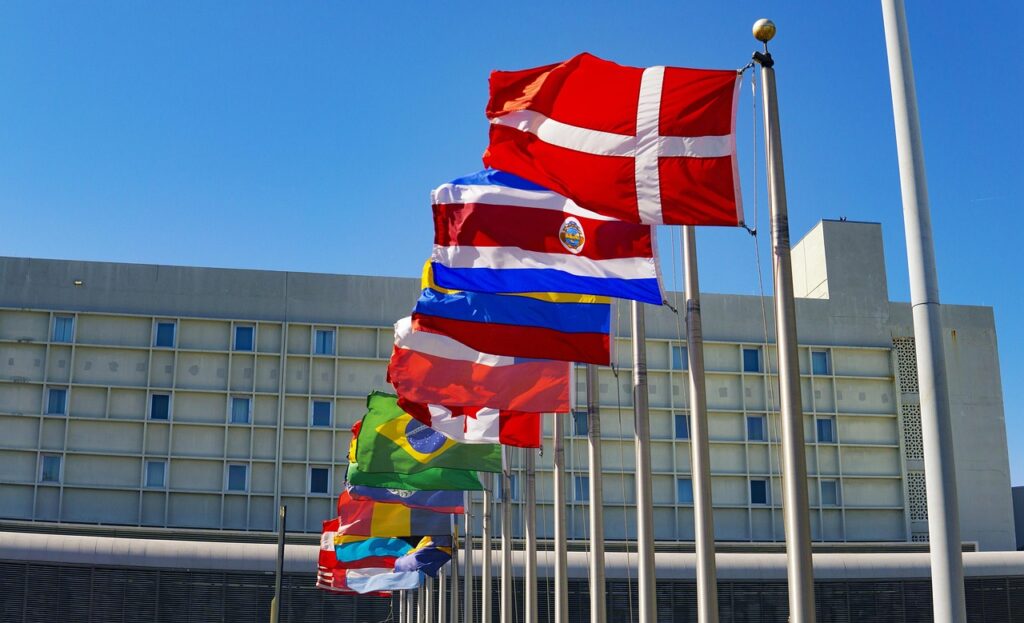
6. **The 20th Century Population Explosion**The 20th century witnessed an unparalleled population explosion, yet it was also marked by periods of immense loss in specific regions. Imperial Russia and later the Soviet Union, for instance, endured a succession of major wars, famines, and other catastrophic events during the first half of the century, which resulted in staggering large-scale population losses, with approximately 60 million excess deaths recorded. These devastating events represent a somber counterpoint to the overall global growth narrative of the era.
Following the collapse of the Soviet Union, Russia’s population continued to decline significantly, falling from 150 million in 1991 to 143 million in 2012. However, by 2013, this protracted decline appeared to have stabilized, indicating a potential shift in its demographic trajectory. While some regions faced contraction, many countries in the developing world experienced exceptionally rapid population growth from the early 20th century onwards.
This explosive growth in the developing world was largely attributable to concurrent economic development and substantial improvements in public health infrastructure and access. These factors combined to reduce mortality rates, particularly infant mortality, while birth rates often remained high for a period. China’s population is a prime example: it rose from approximately 430 million in 1850 to 580 million in 1953, and today stands at over 1.3 billion, demonstrating an astonishing surge over a relatively short time frame.
The Indian subcontinent also saw immense expansion, with its population increasing from about 125 million in 1750 to 389 million in 1941. Today, India, Pakistan, and Bangladesh collectively are home to approximately 1.63 billion people, illustrating the monumental scale of regional demographic shifts. Smaller nations and islands also experienced dramatic increases; Java, an Indonesian island, which had about 5 million inhabitants in 1815, grew to a population of over 139 million by 2020. Brazil’s population decupled—increasing tenfold—from about 17 million in 1900 to approximately 176 million in 2000, growing from roughly 1% to almost 3% of the global population. Similarly, Mexico’s population expanded from 13.6 million in 1900 to about 112 million in 2010, and Kenya’s population surged from 2.9 million between the 1920s and 2000s to 37 million. These numerous examples vividly highlight the widespread and rapid demographic transformation that characterized the 20th century across much of the developing world.
Navigating the complexities of global population requires more than just historical accounting; it demands an understanding of current demographic indicators, regional distributions, and the intricate projections that shape our future. As we transition from the profound historical shifts that brought us to eight billion people, it becomes imperative to analyze the present landscape and look ahead at what demographic science predicts. This section will meticulously examine the milestones that define our numerical journey, dissect key indicators, and explore the diverse demographic profiles across continents, offering a clear and authoritative perspective on humanity’s current standing and its future trajectory.
Read more about: America’s Manufacturing Resurgence Will Be Powered by These Robots: A Look at the Nation’s Enduring Capacity for Innovation
7. **World Population Milestones: The Billion-Mark Journey**The journey of human population reaching successive billion-person milestones offers a compelling narrative of accelerating growth followed by a notable slowdown. It took an extraordinary 300,000 years for the world population to first reach one billion around 1804. This initial billion-mark was a testament to humanity’s slow but persistent expansion over millennia, overcoming countless challenges to establish a widespread presence across the globe.
The pace then quickened dramatically, with the population hitting two billion in 1927, just 123 years later. The acceleration continued into the mid-20th century, with the third billion achieved in 1960 (a mere 33 years), and the fourth billion following quickly in 1974 (14 years). This rapid succession of milestones underscored an era of unprecedented growth, driven by medical advancements, agricultural improvements, and post-war societal changes that significantly lowered mortality rates and increased life expectancy across many regions.
Further milestones were reached in quick succession: five billion in 1987 (13 years), six billion in 1999 (12 years), and seven billion in October 2011, according to the United Nations. The United States Census Bureau, by comparison, estimated seven billion in March 2012. These markers were often commemorated by the United Nations, highlighting the global significance of these demographic achievements and prompting international discussions on resource management and sustainable development.
Most recently, the global population surpassed eight billion in November 2022, as estimated by the United Nations. Looking ahead, while the population continues to grow, the rate of increase is projected to decelerate further. It is anticipated to take another 15 years to reach nine billion by 2037, and then an additional 20 years to reach ten billion by 2057, indicating a longer interval between these latter milestones. This extended timeframe between billion-person increments reflects the ongoing global demographic transition, where fertility rates are declining in many parts of the world.
8. **Key Global Demographic Indicators**Beyond raw numbers, a deeper understanding of the world population emerges from an analysis of its key demographic indicators, providing a comprehensive picture of its structure and characteristics. As of 2020, the global ratio stands at approximately 1.01 males to 1 female, indicating a slight numerical advantage for males globally. This ratio can vary significantly at regional and national levels, influenced by birth rates, migration patterns, and differential mortality rates.
The age structure of the world population is also critically important for future planning and resource allocation. In 2020, approximately 24.7% of the global population was aged under 15, representing the youngest demographic. The largest segment, 65.2%, fell within the 15–64 age bracket, comprising the majority of the working-age population. Those aged 65 or over constituted 10.1%, a proportion that is steadily increasing as life expectancies rise worldwide.
The median age of the world’s population provides a single value representing the age at which half the population is older and half is younger. In 2020, this median age was estimated to be 31 years, and it is expected to rise to 37.9 years by 2050. This upward trend in median age signals a global demographic shift towards an older population, with implications for labor markets, healthcare systems, and social security programs.
Furthermore, global average life expectancy, as measured by the World Health Organization in 2020, was 73.3 years. Disparities exist between es, with women living an average of 75.9 years and men approximately 70.8 years. The global fertility rate, last estimated in 2010, stood at 2.44 children per woman, a figure that continues to be a primary determinant of future population growth. Other socio-economic indicators include an 87% literacy rate for those over 15 and, as of January 2024, approximately 5 billion global Internet users, representing 66% of the world population, highlighting increasing global connectivity.
Read more about: Deconstructing Failure: Understanding ‘Worst’ in Business and Celebrity Ventures
9. **Continental Distribution of Humanity**The distribution of the world’s population across its continents reveals significant regional disparities and concentrations of human life. Of Earth’s seven continents, six are permanently inhabited on a large scale, each supporting vastly different population sizes and densities. Antarctica, in stark contrast, maintains only a very small, fluctuating population of about 1,200 people, primarily based in polar science stations, underscoring its unique and inhospitable environment for widespread human settlement.
Asia stands as the most populous continent by a considerable margin, housing an astounding 4.64 billion inhabitants, which accounts for a dominant 60% of the entire world population. Within Asia, the world’s two most populated countries, India and China, together command approximately 36% of the global population, exerting immense demographic influence. This vast concentration underscores the historical and ongoing importance of Asian regions in shaping global population trends.
Africa follows as the second most populated continent, with a substantial population of around 1.34 billion people, comprising 17% of the world’s total. This continent is characterized by generally higher fertility rates and rapid population growth, contributing significantly to future global demographic expansion. Europe, with its 747 million people, accounts for 10% of the world’s population as of 2020, exhibiting slower growth and, in some areas, declining populations due to lower birth rates.
The Latin American and Caribbean regions together are home to approximately 653 million people, representing 8% of the global total, while Northern America, encompassing the United States and Canada, has a population of around 368 million, or 5%. Oceania, the least populated of the inhabited continents, is home to about 42 million inhabitants, making up a modest 0.5% of the world’s population. Projections suggest that regions like Sub-Saharan Africa will continue to see a significant increase in their share of the global population, while Eastern Asia and Southeastern Asia are projected to see a decrease in their percentage contribution, illustrating dynamic shifts in continental demographic weight.
Read more about: Unveiling America: A Deep Dive into the Nation’s Enduring Spirit, Milestones, and Unique Tapestry
10. **Analyzing Population Density and Its Implications**Population density, measured as people per square kilometer, offers crucial insights into how concentrated human populations are in different regions, influencing resource demands, infrastructure development, and environmental impact. Among countries with a population above 5 million, Singapore stands out as the most densely populated, with an astonishing 8,235 people per square kilometer. This extreme density highlights the unique challenges and innovative urban planning required for such compact nations.
Following Singapore, Bangladesh exhibits a very high density of 1,116 people per square kilometer, reflective of its large population within a relatively small land area. Other highly dense nations include Palestine, Taiwan, South Korea, Lebanon, Rwanda, Burundi, Israel, and India, all reporting over 400 people per square kilometer. These figures underscore the varied geographical and socio-economic factors that contribute to population concentration, from island nations to regions with significant historical populations.
Examining countries that rank highly in both total population (more than 20 million people) and population density (more than 250 people per square kilometer) provides a critical perspective on the confluence of large numbers and limited space. This list includes nations like India, Pakistan, Bangladesh, Japan, the Philippines, Vietnam, the United Kingdom, South Korea, Taiwan, and Sri Lanka. For these countries, managing the demands of a large, densely packed populace is a continuous and complex undertaking.
Notably, while many of these countries are experiencing growing populations, Japan stands as an exception, with its high density existing alongside a declining population trend. This phenomenon in Japan, alongside South Korea and Taiwan which show steady populations, illustrates that high density does not always equate to continuous population growth. Rather, it can reflect a mature demographic profile where birth rates have fallen below replacement levels, even in urbanized and economically developed settings.
Read more about: Unlocking the Universe’s Secrets: The Breakthrough Decoding of a 200-Million-Year-Old Space Signal
11. **The Dynamics of Population Growth and Decline**The trajectory of global population is not a story of uniform expansion but rather a complex interplay of growth and decline, fluctuating at differing rates across regions and over time. While population growth has been a long-standing trend across all inhabited continents and most individual states, the 20th century marked an unparalleled surge, with the global population rising from approximately 1.6 billion in 1900 to over 6 billion by 2000. This massive increase was largely propelled by humanity entering the early phases of the demographic transition, characterized by significant reductions in mortality rates due to improved sanitation and medical advancements, alongside a massive boost in agricultural productivity from the Green Revolution.
However, this rapid growth did not persist indefinitely. The annual global population growth rate peaked at 2.1% between 1965 and 1970, then began a steady decline. It moderated to 1.3% during the 2000–2005 period and further decreased to 1.1% between 2015 and 2020. This ongoing deceleration in the growth rate signifies a mature phase of the demographic transition in many nations. Despite this global slowdown, growth still remains notably high in Sub-Saharan Africa, where fertility rates continue to be higher compared to other regions.
Conversely, some countries have begun to experience population decline. During the 2010s, Japan and several European nations started to see their populations shrink, primarily due to sub-replacement fertility rates. This trend highlights the critical threshold where fewer births than deaths, combined with limited immigration, lead to a contracting population, posing unique societal and economic challenges such as an aging workforce and increased pressure on social support systems.
The shifting dynamics are also reflected in crude birth and death rates. In the period 1950–55, the crude birth rate was 36.9 per 1,000 population, with a crude death rate of 19.1 per 1,000. By 2015–20, both numbers had dropped significantly to 18.5 per 1,000 for births and 7.5 per 1,000 for deaths. UN projections for 2100 anticipate a further decline in the crude birth rate to 11.6 per 1,000, while the crude death rate is projected to increase to 11.2 per 1,000, suggesting a near-zero population growth rate globally by the end of the century. The total number of births globally is projected to peak around 2040–2045 at 141 million per year, before slowly declining to 126 million per year by 2100, while the total number of deaths is projected to grow steadily from 57 million per year to 121 million per year by 2100, further illustrating the converging trends of births and deaths globally.
Read more about: America’s Manufacturing Resurgence Will Be Powered by These Robots: A Look at the Nation’s Enduring Capacity for Innovation
12. **Navigating Future Population Projections**Projecting long-term global population growth is inherently complex, fraught with uncertainties, and subject to a multitude of statistical assumptions regarding future fertility and mortality rates. Different entities, such as the United Nations and the US Census Bureau, often provide slightly varied estimates for past milestones, underscoring the challenges in precise demographic forecasting. The UN, for instance, has consistently revised its projections over the decades, reflecting evolving demographic trends and improved data, sometimes downwards and at other times upwards, as seen with its 2006 revision for 2050 estimates.
Current UN projections from 2012 indicate a continued increase in population in the near future, with the global population expected to reach between 8.3 and 10.9 billion by 2050. Looking further ahead, 2003 UN Population Division projections for the year 2150 spanned a wide range, from a low of 3.2 billion to a high of 24.8 billion, demonstrating the vast impact of underlying assumptions. More recent estimates from 2014 forecast between 9.3 and 12.6 billion in 2100, with a possibility of continued growth thereafter. The 2019 UN revision’s “medium variant” offers a more focused outlook, suggesting nearly 8.6 billion in 2030, about 9.7 billion in 2050, and approximately 10.9 billion in 2100, anticipating a plateau of growth.
However, alternative perspectives offer different scenarios. The German Foundation for World Population, in December 2019, projected that the global population would reach eight billion by 2023, increasing at a rate of 156 people every minute. In contrast, a modeled projection by the Institute for Health Metrics and Evaluation (IHME) suggests that the global population will peak earlier, in 2064, at 9.73 billion people, followed by a decline to 8.79 billion by 2100. These divergences highlight the sensitivity of projections to different methodologies and variables, particularly the interplay between declining average global birth rates and mortality rates as nations progress through the demographic transition, and the significant variations between developed and developing countries.
Some demographers, like Jorgen Randers, argue that traditional projections may not adequately account for the downward impact of global urbanization on fertility, suggesting a peak in the early 2040s at about 8.1 billion, followed by a decline. Meanwhile, Adrian Raftery, a University of Washington professor, maintains a cautious stance, stating there’s a 70% probability the world population will not stabilize this century, underscoring the enduring importance of this issue. These varying forecasts also intertwine with critical debates around the sustainability of further world population growth, with concerns often raised about growing pressures on the environment, global food supplies, and finite energy resources. Intriguingly, some scholars also introduce the concept of “cultural selection,” positing that significant differences in fertility rates between certain cultures, such as religious groups, could lead to a future resurgence in overall population growth rates, emphasizing that demographic trends are not solely driven by economic and medical factors but also by deeply ingrained societal and cultural norms. This multifaceted perspective on population forecasts ensures that our understanding remains adaptable to new data and evolving societal behaviors.
Read more about: The Evolving Science of Healthy Eating: A Comprehensive Guide to Dietary Principles and Sustainable Wellness
Our exploration of world population, from its earliest estimates to the most nuanced future projections, reveals a narrative of constant flux and profound transformation. The numbers tell a story not just of statistical aggregates but of humanity’s incredible journey, marked by resilience, innovation, and an ever-evolving relationship with our planet. As we stand on the cusp of significant demographic shifts, understanding these trends is not merely an academic exercise; it is an essential guide for navigating the challenges and opportunities that lie ahead, shaping a sustainable future for all eight billion, and beyond.

